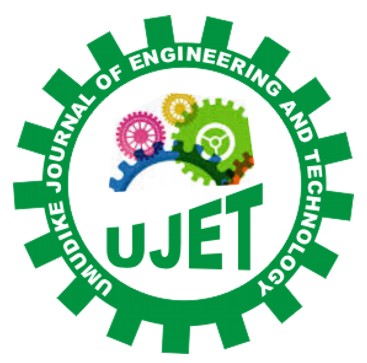|
Oyelami, A. T.
College of Engineering, Federal University of Agriculture, P.M.B, 2240. Abeokuta, Ogun State. Nigeria
Kuye, S. I.
College of Engineering, Federal University of Agriculture, P.M.B, 2240. Abeokuta, Ogun State. Nigeria
Babalola, A. S.
College of Engineering, Federal University of Agriculture, P.M.B, 2240. Abeokuta, Ogun State. Nigeria
ABSTRACT
This work evaluated the geochemical properties of kaolin deposits at Mile 6 area of
Abeokuta-Ajebo road, Ogun State, Nigeria for the purpose of evaluating its
suitability to produce fireclay refractory bricks for lining of
high-temperature equipment such as rotary and static melting furnaces. The clay samples were characterized by XRF method and later
used for the development of the fireclay samples by blending with Groundnut
Shell Ash (GSA) and Rice Husk Ash (RHA) additives in 5%, 10% and 15 % weighted
values respectively in order to improve the bricks properties. The clay material was
predominantly silica oxide (SiO2) 33.71% and
Aluminum Oxide (Al2O3) 47.64% while the
other oxides present included Fe2SO3, CaO, NaO, MgO,
K2O and TiO2, as impurities of
about 3%. The GSA-additive bricks developed have relatively high
density and shrinkage properties over the RHA-additive bricks at 10% and 15%
additives. The refractoriness improved by 12.3% at 5% weighted additive value of
GSA. It was discovered that as the GSA additives increases, there was a
corresponding increase in linear Crushing Strength (CS) and linear decrease in
CS as RHA additives increases. Increasing both additives in the bricks
compositions resulted to increase in water absorption, increase in apparent
porosity, and linear decrease in firing shrinkage. The work showed that the
various additives added in (wt %) have significant influence on the physical
and mechanical properties of the fireclay bricks produced from the Ajebo clay
which make them suitable for use as lining refractory in high-temperature equipment such as rotary
and static melting furnaces.
Keywords: Fireclay, Refractory, Furnace; Water Absorption, Apparent Porosity, Shrinkage
https://doi.org/10.33922/j.ujet_v6i1_8
|
View: 434 | Download: 28
Published
Monday, June 01, 2020
Issue
Vol. 6 No. 1, June 2020
Article Section
GENERAL
The contents of the articles are the sole opinion of the author(s) and not of UJET.
|


